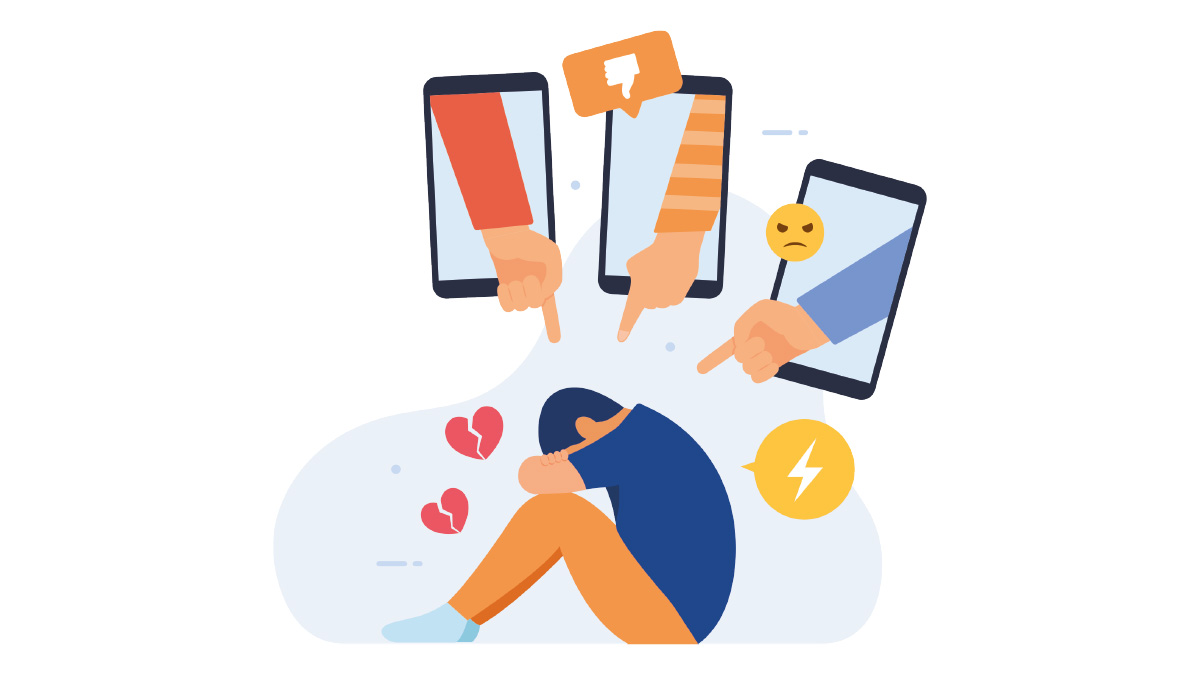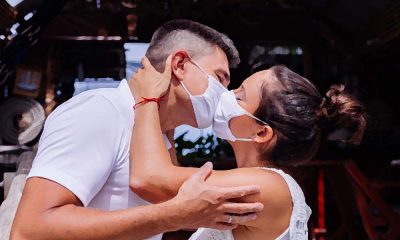Salud
Dióxido de Cloro contra Covid-19
Publicado
5 años antesel

Previo a la vacuna contra el Covid-19, en el esfuerzo por encontrar un tratamiento que ayude a prevenir o curar este virus, varios médicos han optado por suministrar a sus pacientes Dióxido de Cloro, un compuesto que ha resultado la salvación de muchos.
¿Qué es?
El médico pediatra Salvador Acosta Estrada, quien desde el inicio de la pandemia ha tratado a personas contagiadas de la enfermedad, responde que el Dióxido de Cloro es una molécula compuesta por cloro y dos átomos de oxígeno, que al combinarse con clorito de sodio proporciona oxígeno y ayuda a cambiar el pH de la sangre, el cual se debe mantener en un rango de 7.35 a 7.45.
Nos explica que cuando el pH baja, los microorganismos aprovechan para provocar enfermedades, incluyendo el Sars-Cov-2, es decir, el Covid-19, un virus que vive en la acidez de éste.
Y es precisamente cuando este “remedio” actúa, pues ayuda a oxigenar el organismo, devolviéndole a los niveles adecuados de pH, provocando, según los testimonios, mejoría en circulación, presión arterial, niveles de azúcar, niveles de dolor, etcétera.
¿Cuándo suministrarlo?
“Normalmente existe una forma de prevención, una forma de mantenimiento y una forma curativa, pero cuando nosotros tenemos una fase tres –terminal– de Covid, ni el Dióxido, ni pomada de la campana nos puede salvar, el único es Diosito”, asegura el médico, quien comenta que esto se debe a que en esta fase (de tres) ya hay una respuesta inflamatoria bien marcada, con destrucción de tejidos y ningún medicamento va a responder.
Por lo anterior se recomienda administrar el compuesto en fase preventiva y curativa, antes de llegar a la fase terminal.
Agrega que los efectos secundarios de este son mínimos, como dolor de cabeza, mareos y poca fiebre, aunque es recomendable para cualquier persona, desde niños hasta adultos de la tercera edad.
¿Dónde encontrarlo?
El doctor Acosta aclara que este tipo de solución no se va a encontrar en farmacias, pues el Gobierno tiene prohibida su venta ya que no hay estudios que avalen la eficacia del mismo, sin embargo, hay muy pocos médicos, como él, que lo usan basado en la evidencia publicada en artículos científicos que afirman su efectividad en el tratamiento contra el coronavirus.
“Yo se lo doy a mis pacientes en mi consultorio”, menciona, por lo que si hay algún interesado en consumir Dióxido de Cloro, puede contactarse con él a través de los teléfonos 656-616-4556 y 656-199-9093, donde también se proporciona una plática para conocer bien qué es o de qué se trata el proceso, que aunque ha beneficiado a quienes lo han probado, no hay que olvidar que la mejor prevención siguen siendo las medidas de sana distancia, lavarse las manos con jabón de manera continua y sobre todo usar el cubrebocas, tres pasos básicos que te salvarán la vida.
Chlorine Dioxide against Covid-19
Prior to the Covid-19 vaccine, in an effort to find a treatment that would help prevent or cure this virus, several doctors have chosen to provide their patients with Chlorine Dioxide, a compound that has proven to be a lifesaver for many.
What is it?
Pediatrician Salvador Acosta Estrada, who since the beginning of the pandemic has treated people infected with the disease, answers that Chlorine Dioxide is a molecule composed of chlorine and two oxygen atoms, which when combined with sodium chlorite provides oxygen and helps change the pH of the blood, which should be kept in a range of 7.35 to 7.45.
He explains that when the pH drops, microorganisms take advantage of it to cause diseases, including Sars-Cov-2, that is, Covid-19, a virus that lives in the acidity of the cells.
And it’s precisely when this “remedy” acts, as it helps to oxygenate the body, returning it to the right pH levels, causing, according to testimonies, improvement in circulation, blood pressure, sugar levels, pain levels, etc.
When should it be administered?
“Normally there’s a form of prevention, a form of maintenance and a form of healing, but when we have a phase three -terminal- of Covid, neither the Dioxide can save us, only God”, assures the doctor, who comments that this is because in phase three there is already a well marked inflammatory response, with tissues destruction and no medication will help.
Therefore, it’s recommended that the compound be administered in the preventive and healing phase, before reaching the terminal phase.
He adds that the side effects of this are minimal, such as headache, dizziness and low fever, although it is recommended for anyone from children to elderly adults.
Where to find it?
Doctor Acosta clarifies that this type of solution is not going to be found in pharmacies, since the Government has prohibited its sale since there are no studies that endorse its effectiveness, nevertheless, there are very few doctors, like him, who use it based on the evidence published in scientific articles that affirm their effectiveness in the treatment against the coronavirus.
“I give it to my patients in my office,” he mentions, so if there is anyone interested in consuming Chlorine Dioxide, you can contact him by calling 656-616-4556 and 656-199-9093, where he also gives a talk to learn more about the process, that although it has benefited those who have tried it, we must not forget that the best prevention is the measures of healthy distance, continuous hand washing with soap and above all using the facemask, three basic steps that will save your life.
Te puede interesar
Salud
Videojuegos: ¿afición divertida o adicción silenciosa?
Publicado
2 meses antesel
01/08/2025Por
Marisol Parra
Los videojuegos son una forma popular de entretenimiento, pero su uso excesivo puede afectar la salud física, mental y emocional.
Hoy en día, los videojuegos han pasado de ser un pasatiempo ocasional a ocupar un lugar protagonista en el tiempo libre de niños, adolescentes e incluso adultos. Gracias al desarrollo del mundo virtual y a la enorme variedad de temáticas y estilos, es fácil entender por qué se han convertido en uno de los entretenimientos favoritos, solo por detrás de las redes sociales.
Pero como en todo, el equilibrio es clave. Para algunas personas, jugar puede ser una actividad sana, controlada y hasta enriquecedora. Sin embargo, para otras, puede transformarse en una adicción con consecuencias reales y preocupantes. Detrás de cada juego hay estrategias bien pensadas basadas en neurociencia: recompensas constantes, desafíos superables, sensación de logro inmediato… Todo esto estimula la liberación de dopamina en el cerebro, una sustancia relacionada con el placer. ¿El resultado? Queremos más y más. Y cuando perdemos el control del tiempo o dejamos de hacer cosas importantes por seguir jugando, hablamos de una posible adicción.
Esa compulsión puede hacer que una persona posponga o abandone actividades básicas como estudiar, trabajar, dormir o convivir con su familia. En estos casos, incluso es común experimentar ansiedad o irritabilidad cuando no se puede jugar, lo que indica síntomas de abstinencia.
El abuso prolongado de videojuegos puede afectar diferentes áreas de la vida. Aquí algunos efectos que conviene conocer:
- Salud mental: irritabilidad, ansiedad, depresión, alteraciones del sueño, trastorno por déficit de atención (TDAH), dependencia emocional del juego.
Salud física: vista cansada, dolores musculares por malas posturas, insomnio.
Comportamiento: conductas desafiantes, baja tolerancia a la frustración, respuestas agresivas.
¿Cómo jugar de forma saludable?
Los videojuegos también tienen beneficios: desarrollan la creatividad, el pensamiento lógico y pueden fomentar la conexión social. Lo importante es establecer horarios, respetar rutinas y equilibrar el juego con otras actividades. En el caso de niños y adolescentes, los padres deben supervisar y poner límites claros, La Organización Mundial de la Salud (OMS) reconoce la adicción a los videojuegos como un trastorno mental, por lo que es importante prevenir, observar cambios de conducta y, si es necesario, buscar ayuda profesional.
Los videojuegos pueden disfrutarse, pero con control. El equilibrio es la clave para que sigan siendo un pasatiempo sano y no un problema en casa.
Video Games: Fun Hobby or Silent Addiction?
Video games are a popular form of entertainment, but excessive use can affect physical, mental, and emotional health.
Nowadays, video games have gone from being an occasional pastime to taking center stage in the free time of children, teens, and even adults. Thanks to the development of virtual worlds and a vast variety of themes and styles, it’s easy to understand why they’ve become one of the most popular forms of entertainment — second only to social media.
But as with everything, balance is key. For some, gaming can be a healthy, controlled, and even enriching activity. For others, it can turn into an addiction with serious and concerning consequences.
Behind every game, there are carefully designed strategies based on neuroscience: constant rewards, achievable challenges, and an immediate sense of accomplishment. All of these stimulate the release of dopamine, the brain’s pleasure chemical. The result? We want more and more. And when we lose track of time or begin to neglect important responsibilities just to keep playing, we may be dealing with a potential addiction.
This compulsion can lead someone to delay or abandon basic activities such as studying, working, sleeping, or spending time with family. In more serious cases, it’s common to experience anxiety or irritability when not playing — signs of withdrawal.
How Gaming Affects Daily Life
Prolonged video game abuse can negatively impact various areas of life. Here are some common effects:
Mental health: irritability, anxiety, depression, sleep disturbances, ADHD symptoms, and emotional dependence on gaming.
Physical health: eye strain, muscle pain due to poor posture, and insomnia.
Behavior: defiant behavior, low frustration tolerance, and aggressive reactions.
How to Game in a Healthy Way
Video games can also have positive effects: they can enhance creativity, logical thinking, and even social connection. The key is to set time limits, respect routines, and balance gaming with other activities.
For children and teens, parental supervision and clear boundaries are essential. The World Health Organization (WHO) has recognized gaming disorder as a mental health condition, making prevention and observation of behavioral changes crucial. If needed, seeking professional help is recommended.
Video games can be enjoyed — but with control. Balance is the key to keeping gaming a healthy and fun hobby rather than a problem at home.

Relaciónate sanamente con tus alimentos durante estas vacaciones; valora tanto el placer como la conciencia de elegir opciones saludables
Como ya sabemos, las vacaciones suelen ser sinónimo de descanso, familia, amigos y comida, lo que hace casi imposible pensar en cuidarnos o ser saludables. Pero ¿y si cuidarse también incluyera disfrutar?
Como nutrióloga te diré que comer de forma saludable no es sinónimo de restricciones, de dietas estrictas o de privarte de alimentos que te agradan. Comer saludable es un equilibrio que busca llevar una relación positiva con la comida, consumiendo alimentos con buen aporte nutricional, pero sin dejar de disfrutar de tus comidas favoritas.
Con este artículo más que darte consejos para ser saludable en vacaciones, te invito a modificar la forma en la que te relaciones con tus alimentos.
1. Escucha a tu cuerpo
La gran mayoría durante esta temporada no sigue una dieta o plan alimenticio, así que, aprender a comer con atención y escuchar a tu cuerpo (cuando tiene hambre y cuando está satisfecho) es la mejor solución sea cual sea la comida.
2. Ordena tus alimentos
En tu plato, empieza con las verduras, luego proteínas (pollo, carne, pescado, huevo, leguminosas), seguido de las grasas (aguacate, nueces, almendras) y por último carbohidratos (pan, arroz, pasta, tortillas), esto te ayudara a aumentar la saciedad y mejorar la digestión.
3. Hidrátate bien
Es importante beber 8 vasos de agua al día, pudiendo incluir tes e infusiones (sin azúcar) para evitar la deshidratación.
4. Muévete con libertad
Camina, explora, conoce, pero siempre procura mantenerte activo, esto te ayudará con la digestión mejorando la motilidad intestinal.
5. Elige con intención y no con culpa
Si vas a darte un gusto, hazlo con plena conciencia y disfrútalo sin remordimientos. Ten en cuenta que un alimento fuera de lo saludable no arruina el proceso, pero una mala alimentación prolongada sí.
Recuerda que en estas vacaciones buscamos nutrir nuestro cuerpo, pero también alimentar el alma.
The Art of Taking Care of Yourself Without Missing Out on Enjoyment
Build a healthy relationship with food during the holidays—honor both the pleasure and the awareness of choosing healthy options.
As we all know, vacations are usually synonymous with rest, family, friends, and food—which makes it almost impossible to think about staying healthy or taking care of ourselves. But what if self-care could also include enjoyment?
As a nutritionist, I can tell you that eating healthily doesn’t mean restriction, strict diets, or depriving yourself of foods you enjoy. Healthy eating is about balance—it means developing a positive relationship with food, choosing items with good nutritional value without giving up your favorite meals.
Rather than offering traditional health tips for vacation, this article invites you to rethink your relationship with food.
1. Listen to Your Body
Most people don’t follow a specific diet or meal plan during this time of year. So, the best solution, no matter what you’re eating, is to practice mindful eating—listen to your body, recognize when you’re hungry, and stop when you’re satisfied.
2. Organize Your Meals
When building your plate, start with vegetables, then move to proteins (chicken, meat, fish, eggs, legumes), followed by fats (avocado, nuts, almonds), and finally carbohydrates (bread, rice, pasta, tortillas). This helps increase satiety and improve digestion.
3. Stay Hydrated
It’s important to drink at least 8 glasses of water a day. You can also include teas and infusions (without sugar) to avoid dehydration.
4. Move Freely
Walk, explore, sightsee—but always try to stay active. Movement helps your digestion and improves intestinal motility.
5. Choose Intentionally, Not Out of Guilt
If you’re going to indulge, do it consciously and without remorse. Remember: one “unhealthy” meal won’t ruin your progress, but prolonged unhealthy habits can.
Remember: This vacation, aim to nourish your body—but also feed your soul.

Descubre qué es el brainrot y cómo lo afecta tu teléfono
¿Cuántas veces has agarrado el celular y no recuerdas para qué fue que lo tomaste?;
¿Cuántas veces, ya que lo tienes en la mano y recordaste para que lo agarraste, te llega una notificación de tus redes, entras y sin darte cuenta ya pasaste más de 15 minutos revisando el feed, y de pronto, como que una “revelación” llega de nuevo a tu mente que te recuerda para qué fue que tomaste el cel, sales del feed para realizar lo que harías, y ya estando en la aplicación que usarías, olvidas de nuevo para qué estás ahí?
¡A mí me ha pasado infinidad de veces! Pensé que quizás era por mi edad, por los embarazos, por las hormonas, por los “efectos del COVID”, bueno hasta pensé que era por los problemas con mi marido, pero la verdad de las cosas, es que esto es una consecuencia por el excesivo uso de redes sociales que provoca lo que ahora se conoce como la “epidemia del BRAINROT”.
Pero ¿qué es esto?,
sígueme leyendo, te platico. El “brainrot” conocido también como podredumbre de cerebro, específicamente hace referencia al contenido no educativo que consume tu atención, no te aporta valor real, y genera una sensación de embotamiento mental, disminuyendo así tu capacidad de concentración.
¿Cómo afecta el brainrot a tu cerebro?
Según investigaciones han demostrado que el consumo excesivo de contenido superficial o negativo reduce la materia gris en la corteza pre frontal, la cual es la parte del cerebro encargada de la toma de decisiones, control de impulsos y resolución de problemas; disminuye tu capacidad de atención, debilita tu memoria, aumento de ansiedad y depresión, entre otros.
No te asustes, mejor toma medidas; por ejemplo establece límites de tiempo, desactiva notificaciones, has actividades offline como leer un libro (la biblia por ejemplo), has ejercicio y socializa sin pantallas! La vida es tan corta y bella que vale la pena invertir tiempo de calidad en ella. Grissell Guel.
Social Media Disease
Discover what brairot is and how your phone affects it
How many times have you picked up your phone and can’t remember why you picked it up?
The scene continues… as soon as you have it in your hand and remember what you picked it up for, you get a notification from your social media feed. You log in and, without realizing it, you’ve spent more than 15 minutes scrolling through your feed. However, suddenly, like a “revelation,” it hits you why you picked it up.
Then you exit the feed to do what you had to do, and once you’re in the app you were supposed to use, you forget again why you’re there.
Did that sound familiar? It happens to me countless times.
In my case, I thought it was because of my age, pregnancies, hormones, the “effects of Covid.” Well, I even thought it was because of problems with my husband, but the truth is, this is just a consequence of excessive social media use, causing what is now known as the “brainrot epidemic.”
What’s this?
Brainrot, specifically refers to non-educational content that consumes your attention, provides no real value, and creates a feeling of mental dullness, thus diminishing your ability to concentrate.
How does it affect your brain?
According to research, excessive consumption of superficial or negative content reduces the gray matter in the prefrontal cortex, the part of the brain responsible for decision-making, impulse control, and problem-solving. It decreases your attention span, weakens your memory, and increases anxiety and depression, among other factors.
Don’t panic; take immediate action: set time limits, turn off notifications, do offline activities like reading a book (the Bible, for example), exercise, and socialize without screens.
Life is so short and beautiful that it’s worth investing in quality time.






